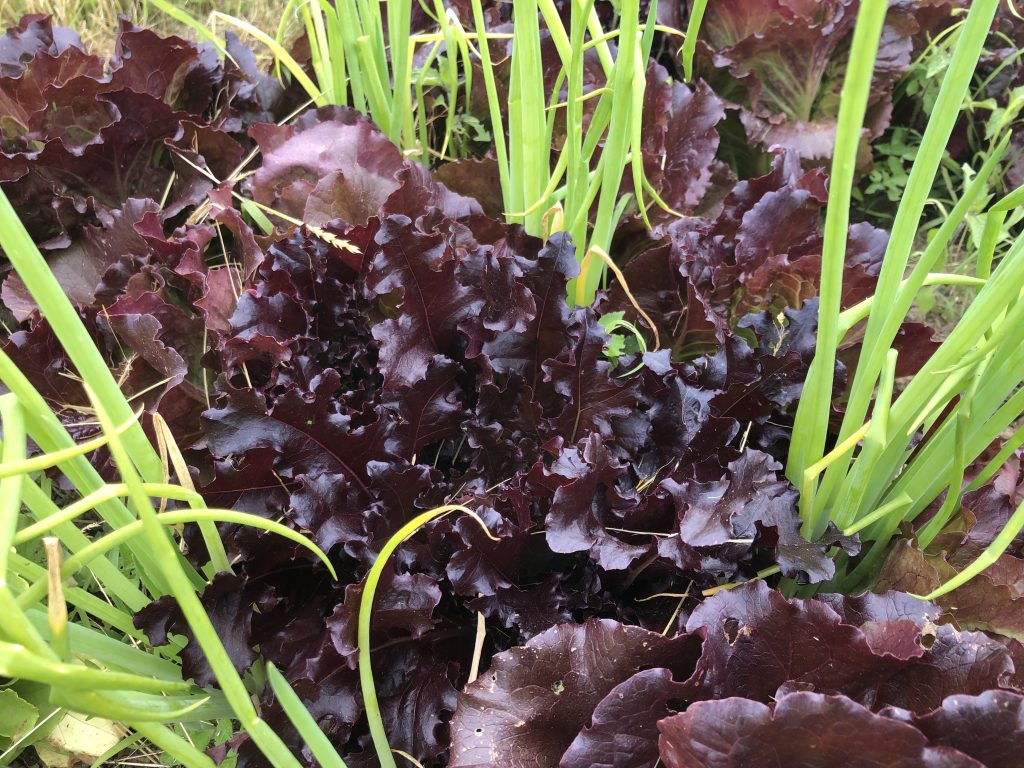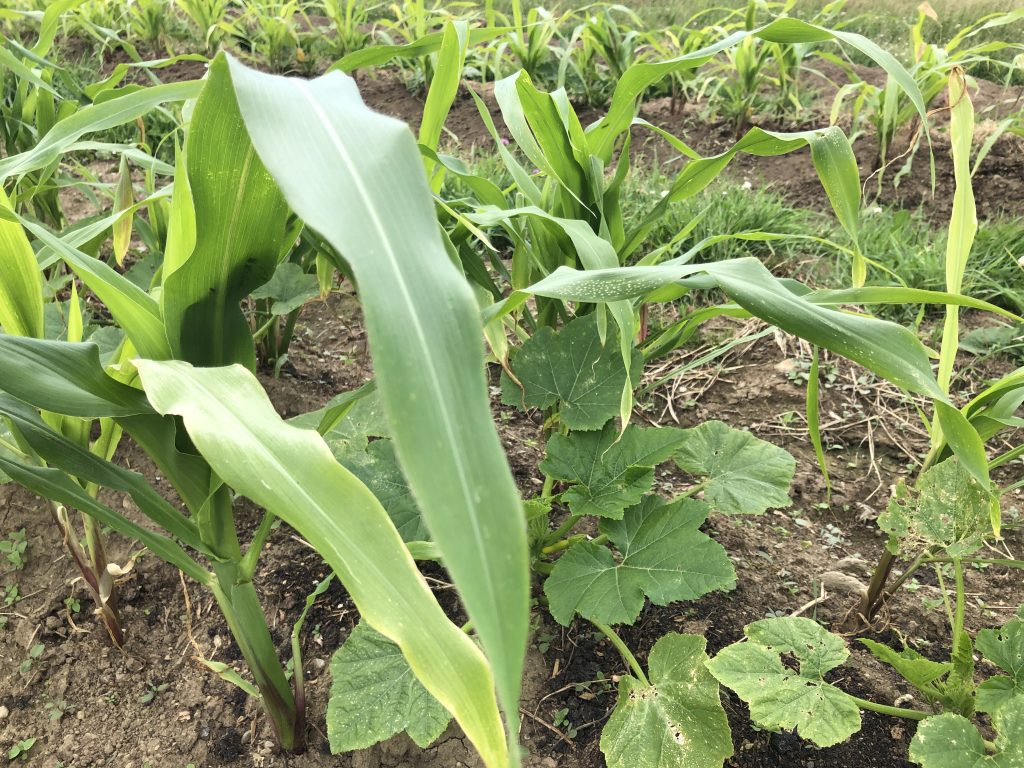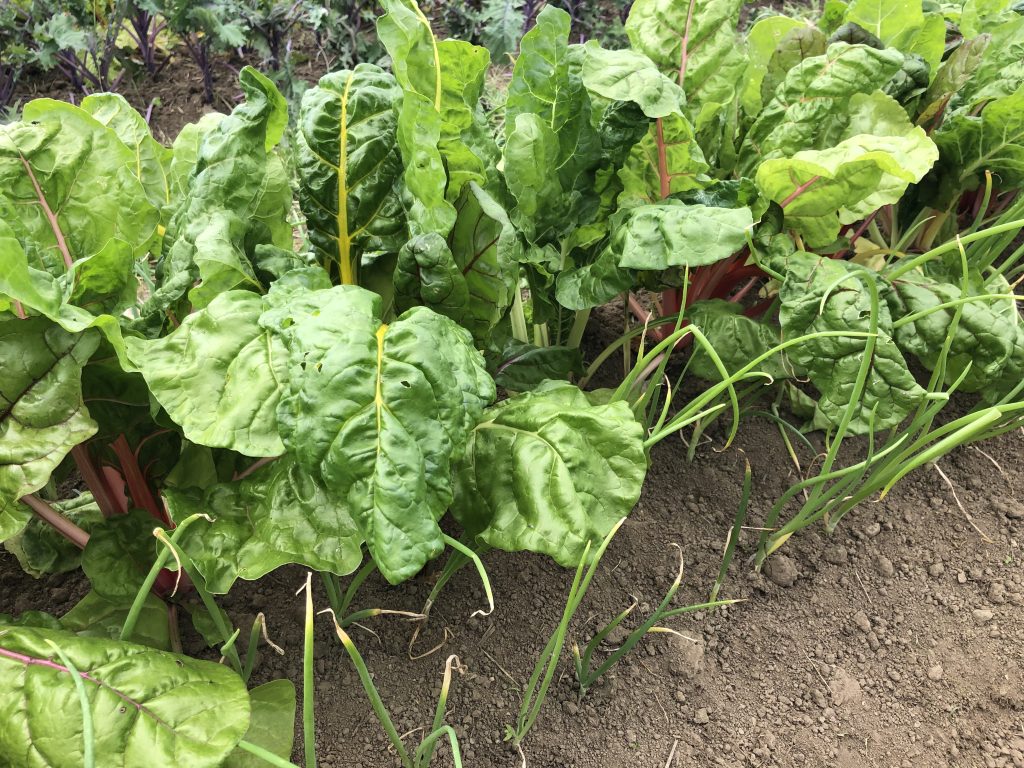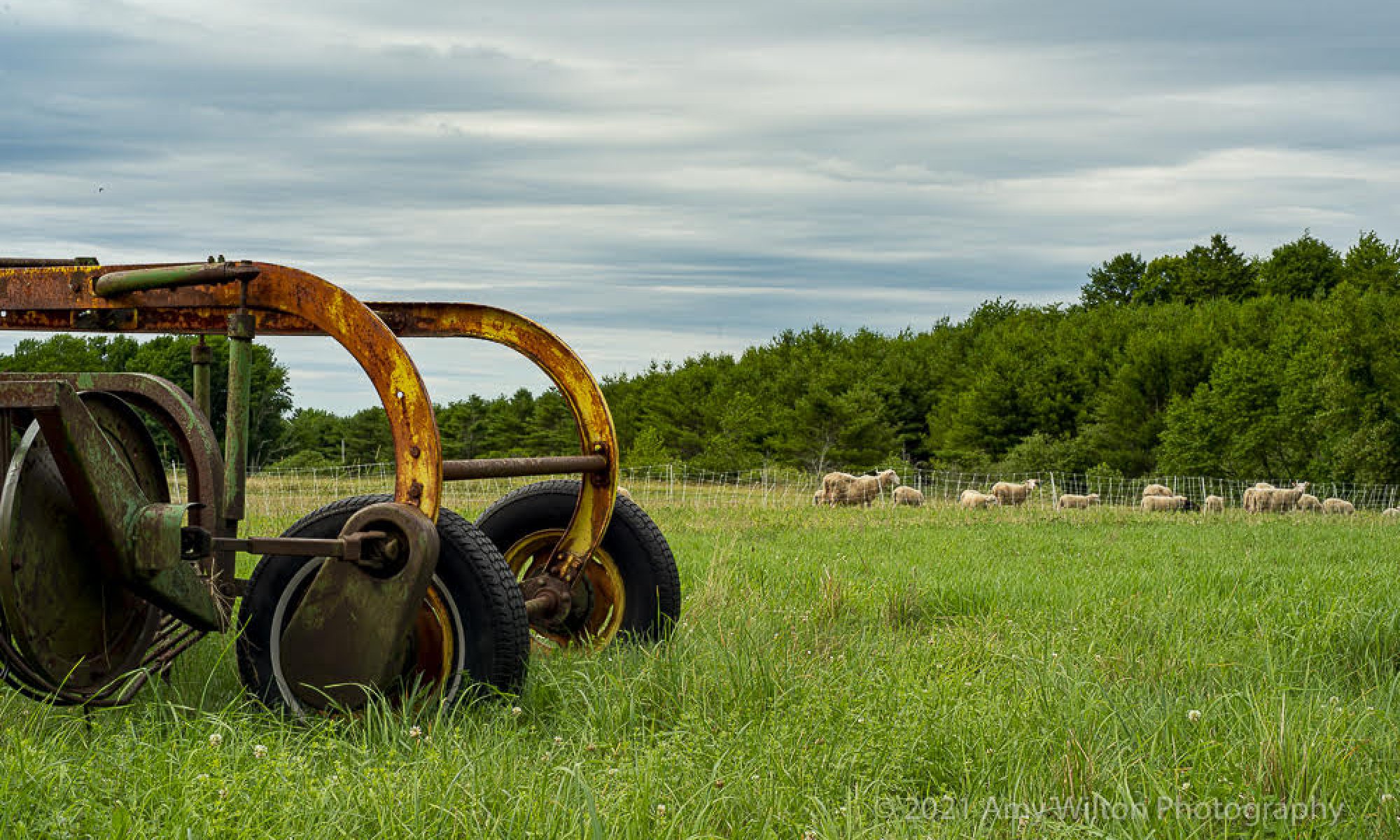
Several weeks ago, I was down in southern Maine for an appointment. While in the area, I decided to visit Frith Farm in Scarborough. Over the winter, I read a number of farming books, one of which was written by Daniel Mays, the farmer at Frith. The farm is beautiful and Daniel and his crew are implementing many cutting-edge practices there. One that has excited me for a number of years now is interplanting, also known as companion planting.
I first encountered this idea in the context of permaculture. Plants in wild places don’t grow separately from one another. Take a look at several square feet of a forest floor or wild meadow and you’ll count many different species growing amongst one another. Each species attracts different soil microbes, takes and leaves different nutrients in the soil, and attracts or deters different pests. Like humans, plants naturally form communities and partnerships that benefit each individual in various ways. Permaculture seeks to emulate nature in order to create sustainable and even regenerative ecosystems that benefit all residents, not just the human ones. One aspect of this is to interplant multiple species to intentionally benefit one another and fill different roles within the created ecosystem.
Back to Frith Farm. At Frith, Daniel has been experimenting for several years with planting several species of traditional farm crops together in the same bed. He isn’t alone in this practice. There are many books out there describing other farms that have found this to be beneficial. In some cases, it can save on bed space, but the major benefits are to the health of the plants and soil.
You may have noticed that here at Hope’s Edge, we’ve been doing some of our own experiments with interplanting. Some of our interplantings are straight up imitations of those Daniel describes in his book. Others are based on our own research for the prevention of specific crop problems. For example, we’ve planted alliums among our lettuces and leafy greens because onion family crops are known to deter leaf-loving pests like aphids and beetles. Several weeks ago, we had quite a lot of cucumber beetles bothering our squash, cucumber, and melon plants. At Frith, the cucumbers were trellised vertically and interplanted with nasturtium. Nasturtium (as well as other flowering plants and aromatic herbs) can deter pests, attract predatory insects, or act as a “trap crop” by holding greater appeal to insects like aphids than the crop at risk. We followed suit, trellising our cucumbers and planting nasturtium and parsley along both sides of the row. We also planted some calendula throughout our squash patch, since calendula (as a member of the marigold family) will serve a similar purpose in deterring pests. Planting flowers in the vegetable garden doesn’t just look pretty, it benefits the vegetables too!


Another tool that has proven beneficial in saving our cucurbits from cucumber beetles is a smelly, but nutrient dense ferment Jason has made by steeping comfrey and stinging nettle in water for several weeks. The resulting “tea” is then diluted and sprayed on the leaves of at-risk plants or even used directly on the roots of seedlings as they are transplanted. This miracle spray has revived many a yellowing leaf and seems to have contributed to the departure of those pesky beetles! Next target: potato beetles!
A third experiment, related to the first, was begun before Tom left. Tom has used cover crops to build Hope’s Edge soil for many years. New research is showing that the benefits of cover cropping are multiplied when multiple species are planted together. A MOFGA article notes that four species are ideal, while farmers like Gabe Brown, author of Dirt to Soil, and Patrick Sullivan of Ananda Gardens in Vermont both assert that 8-10 species provide the most benefit. We decided to start small, using the seed we had, and planted oats, peas, clover, and daikon radish in our spring cover crop mix. We’ll do further cover crop planting as the season goes on, but so far our mix seems to be thriving and the soil coverage is keeping weeds at a minimum in those beds. This week we scythed down the oats before they set seed, producing lovely oatstraw mulch. We’ll report back on the next phase of our cover-cropping adventure as the experiment continues.

The next time you visit the farm, feel free to wander and take a look at some of these experiments in process. Regardless of their impact on our crops, they certainly make for a beautiful patchwork of color!
~ Rachel
